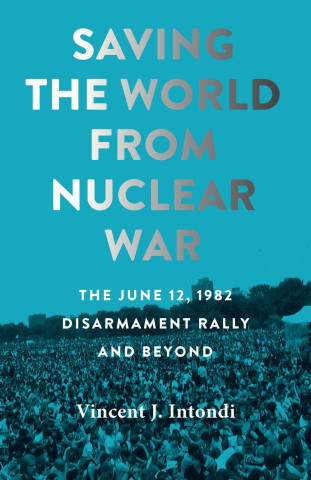
Reviews
Inspectors for Peace is a tour de force about the IAEA's history and evolution and thus a must-read for understanding the strengths and weaknesses of the agency's role in preventing proliferation.
Elisabeth Roehrlich has comprehensively captured the history of the nuclear world and the IAEA's evolution....As the book is based on extensive archival research, in particular the IAEA archives, it is recommended for those who have interest in and are dealing with peaceful uses of nuclear technology and non-proliferation.
One of the many virtues of Roehrlich's book is the increased access to and insightful reading of the IAEA's rich archival sources in its Vienna headquarters. This bodes well for science and technology scholars, as the IAEA and its activities certainly merit further consideration.
This book makes the novel case that what is apparently the IAEA's greatest weakness—its counterintuitive dual mandate of sharing nuclear knowledge and technology while hoping to deter nuclear weapons programs—is, in fact, central to its success. But Inspectors for Peace is more than the history of an institution; it is the history of an institution in action. Roehrlich, a world-class authority on the history of nuclear nonproliferation, has written an original and scholarly treatise, elegantly framed and eloquently written. This pathbreaking opus on the IAEA is poised to become the leading historical reference in the field.
Aiming at a wide readership interested in nuclear issues, including students, scholars, journalists, commentators, and general readers, this very welcome book fills an important gap by providing a comprehensive history of the IAEA from its foundation to the present. It places the agency in the broader context of the search for a nuclear order that would make it possible to exploit atomic energy for peaceful purposes while also avoiding nuclear war.
Inspectors for Peace is a wonderfully researched and beautifully written study which offers the first authoritative history of a key institution of the global nuclear order and will be essential reading for anyone interested in post-1945 international relations.
Elisabeth Roehrlich has written a deeply-researched narrative of a peculiar global agency, born at the height of the Cold War, that continues to promote and police nuclear technologies. Much more than an institutional history, Roehrlich's story of the so-called nuclear watchdog gives us an inside glimpse into the machinations at the heart of global nuclear politics.
This elegantly written book is a long-anticipated and fascinating study on the history of the IAEA. Inspectors for Peace puts IAEA's dual mandate at the center of a sweeping narrative of the geopolitics of nuclear regulation and global governance. To understand how and why the IAEA promoted the civilian uses of the peaceful atom while at the same time dissuaded nuclear weapon programs, Elisabeth Roehrlich calls attention to vital questions of the politics of international organizations, global order, and state nuclear interests. Based on original research and superb interviews, the book critically questions and goes well beyond IAEA's commissioned and authorized histories.
Book Details
Acknowledgments
Introduction: Nuclear Inspectors
1. One World or None
2. Atoms for Peace
3. Cold War Vienna
4. Science, Safeguards, and Bureaucracy
5. The Nuclear Non-Proliferation Treaty
6. Gaps in the
Acknowledgments
Introduction: Nuclear Inspectors
1. One World or None
2. Atoms for Peace
3. Cold War Vienna
4. Science, Safeguards, and Bureaucracy
5. The Nuclear Non-Proliferation Treaty
6. Gaps in the System
7. North-South Tensions
8. Chernobyl
9. The Nuclear Watchdog
Conclusion: The Last Man Standing
Abbreviations
Glossary
Notes
Index






